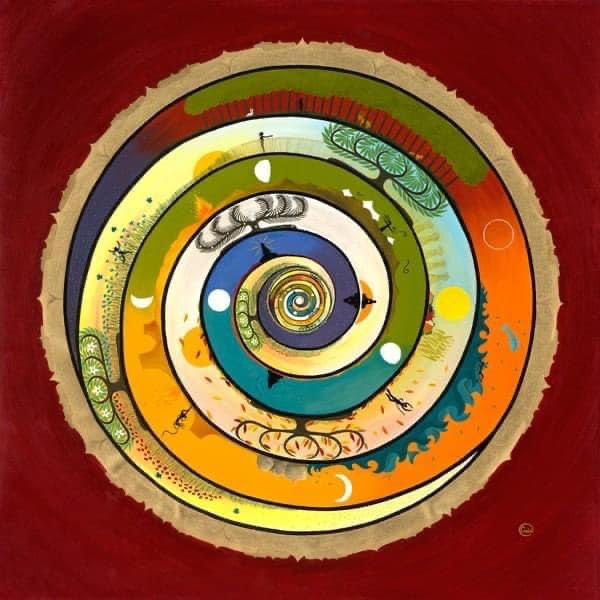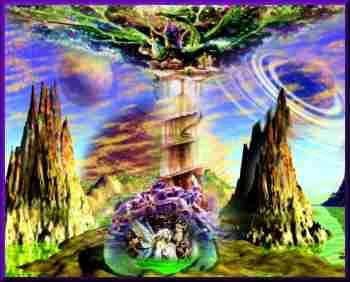
The Spring Equinox, Ostara
- dragonrosecreation
- Mar 21, 2023
- 4 min read
On April 20, 2023 the sun enters Aries at 5:24 PM eastern time thus begins the beginning of a new celestial new year. This day is also international astrology day.
Ostara, the spring equinox, is a solar festival. Author Robert Graves wrote
“The sun arms himself at the Spring Equinox”. But to understand what that truly means we have to look at the myths and stories regarding this holy day.
The word Ostara is a Germanic word and the anglo-Saxon word is Eostre, basically meaning movement toward the rising sun. So this is a notation that states at this time, the sun, which is the king, the solar deity, is getting stronger. The Druids called this first day of spring Alban Eiler, which means, "Light of the Earth”.
Spring Equinox is associated with the Goddess Cybele and her consort Attis who was born a virgin and is resurrected at the Spring Equinox. This is known as the festival Hilaria and is a 3 day celebration.
The Venerable Bede claimed Eostre is the Angelo-Saxon version of Germanic Goddess Ostara, a time of purification and renewal. The Persian Achaemenians celebrated the festival No Ruz ( new day ) which is a 13 day celebration and is a time for people to purify their homes and leap over fires welcoming in the new energies. Interestingly the Spring Equinox has roots in Zoroastrianism where it is known as Chahar-Shanbeh.
Through my studies I have found that the closer to the equator a culture is, there’s more emphasis on the equinoxes; and the more north you go the more you see celebrations for solstices.
What I find more interesting is how the Sabbats were celebrated differently. For example, the way many cultures of the Mediterranean had celebrated Ostara in a similar way the Celts celebrated Beltaine.
This Sabbat marks a time of movement. We are stepping on the renewed Earth that is coming alive from its deep rest ( Northern Hemisphere) to begin life once more. It helps us understand one of life’s mysteries; life, death, and rebirth…..but many leave out sex. This is about fertility and sex is a part of that cycle.
Ostara is a time of balance, equal, harmony. It is when the two opposites come together and stand as one, vibrate as one. They are equal on this day.
With our movement in the stars, we are very much looking at our values, and seeing if they are in fact, in harmony with life… Nature's law. The different aspects that we have been having are giving us the energy of newness, and here we are at the celestial new year. So we are beginning a new cycle, a new time of growth. But where is our focus? For that we have to really know that self, if we truly want to know where we are going, we have to be precise. When the archer pulls back his arrow, he isn’t just carelessly shooting it into the air… No. When the archer pulls back his arrow, his eyesight is focused on his target. He is using precision with his aim, knowing that he has this one chance to take this target down, and if he misses it, he misses the opportunity.
This is a time to balance the masculine (yang) and feminine (yin) within. Knowing when to act and when to wait. Discernment of actions. Knowing when to give and when to receive, keeping the energy reciprocated. Also looking on our outside to balance this out as well.
For the technical explanation of the spring equinox, it happens every year around March 20/21st and signals to us the beginning of spring. The earth normally sits at a 23° angle on its axis as it orbits around the sun. The equinox occurs when the earths axis doesn’t tilt toward or away from the sun, Earth sits straight on her axis. It is said that if you are on the equator you can see the sun pass directly overhead. I haven’t experienced this myself, but would love too. Equinoxes happen twice a year, in the spring and fall.
Ostara is not really an original Celtic holy day. The ancient Celtics only celebrated two times of the year: Beltaine and Samhain, the beginning of the light half of the year and the dark half. So this is fairly a new holy day.
Looking for the precise time is almost impossible and honestly it doesn’t matter that much, as it is definitely an important day as it is a shift we can physically see.
The Goddess of spring is normally Ostara, but I would like to acknowledge the Goddess who helped give March its name, Hredhe/Hrede common name Rheda. Her name means ‘victorious’ or ‘the famous’.
The Venerable Bede wrote in his book De Temporum Ratione that the month March is a rough translation of the word Hrēpmōnap, which has her name in it. The month of March was a time of harsh, bad weather and Hredhe was known as the Slayer of Winter. There’s not a lot of information regarding this, as we know that Celts passed knowledge orally so all we have is what Christain Monks, Caesar, and others that spoke of them.
To me, Hredhe is a path opener, clearing the path for the Spring Maiden to come back once again.
Another interesting perception of her aspect was stated by author River Debora. She states “Hretha is a Hearth Goddess. She stands at the threshold of the doors to our home. She helps us prepare for what lies ahead in the outside world, and then transition back to our true selves when we return home.”
Through my research, I have discovered that Hredhe/Hrede/Rhede/Hretha is commonly seen as a hearth goddess. I would add that she is also a Goddess of Transition. March can be seen as a transition month, a twilight period between winter and spring. For our daily lives, she sits at our threshold preparing us for the outside world; and then receives us when we get back home, cleansing us of the stresses of our day so we can truly allow our home to be our sanctuary.
Wishing of prosperity and abundance,
Sirona Rose




Comments